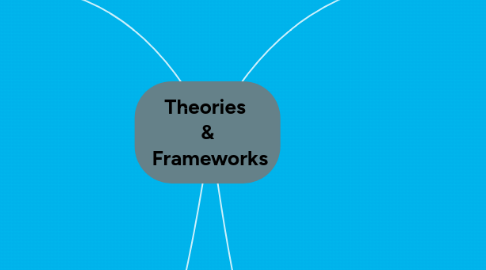
1. Philosophy of Teachnology
1.1. It is similar to your philosophy of teaching but is specific to technology
1.2. Your beliefs about your current teaching practices and the technology you integrate into those practices
1.3. How you incorporate technology into your classroom
1.4. TPACK should influence your Philosophy of Teachnology
1.5. Examples: My ePortfolio, PLN, citations poster, and GoAnimate are all examples that represent my Philosophy of Teachnology
2. TPACK
2.1. Teachers should have all 3 components to ensure the best classroom practices.
2.1.1. Pedagogy
2.1.1.1. The way you teach
2.1.1.2. The practices and methods of both teaching and learning
2.1.1.3. The ways in which you evaluate your students
2.1.1.4. The way you organize your lessons, present your tasks, and adapt your teaching to be suitable for all learners
2.1.2. Content
2.1.2.1. The actual subject matter
2.1.2.2. The knowledge and inquiry of a specific field
2.1.2.3. Example: Math, Language Arts, Physical Education, Science
2.1.3. Technology
2.1.3.1. Knowledge of the different types of technology tools
2.1.3.2. The ability to learn and adapt to new technologies
2.1.3.3. Examples: YouTube, Social Networking Sites, Smartboards, Tablets,
2.2. A VennDiagram is used to represent the connections between the TPACK components. See link.
3. SAMR
3.1. All teachers' can use technology in their classroom, but it is what they do with the technology that is either an enhancement or transformational. The 4 levels of technology involvement are known as SAMR.
3.1.1. Transformation
3.1.1.1. Redefinition
3.1.1.1.1. Technology allows for new tasks that were previously not possible
3.1.1.1.2. Technology is used as the base of support for student centred learning
3.1.1.1.3. Sometimes 1 full grade difference for those students who are in a redefining classroom
3.1.1.1.4. Example: see link
3.1.1.2. Modification
3.1.1.2.1. Common classroom tasks are being accomplished through the use of technology
3.1.1.2.2. Significant functional change in the classroom
3.1.1.2.3. Modification level results in 0.5 of a grade higher difference
3.1.1.2.4. Example: email, spreadsheets, online graphs, online discussions
3.1.2. Enhancement
3.1.2.1. Augmentation
3.1.2.1.1. Technology acts as a direct substitute to perform common tasks
3.1.2.1.2. No significant difference in final grades---same as substitution
3.1.2.1.3. Example: Using Microsoft Word instead of hand writing using a pen and paper Example: Taking a test online instead of pen & paper
3.1.2.2. Substitution
3.1.2.2.1. Technology is used to perform the same task that was done before the use of technology
3.1.2.2.2. No functional change in teaching and learning
3.1.2.2.3. No significant differences in final grades of activities.
3.1.2.2.4. Example: Printing out work sheets for your students to work on.
4. 21st Century Learning
4.1. Foundational Knowledge
4.1.1. Content
4.1.1.1. The ability to gather information and evaluate it, using a wide range of technologies.
4.1.2. Information Literacy
4.1.2.1. Applying mathematical ways of thinking to solve every day problems or applying scientific ways to understand the natural world
4.1.3. Cross Disciplinary Knowledge
4.1.3.1. Being able to connect your knowledge and apply it to all different areas or domains.
4.2. Meta Knowledge
4.2.1. Problem Solving & Critical Thinking
4.2.1.1. The ability to interpret information and make informed decisions.
4.2.2. Communication & Collaboration
4.2.2.1. Communicating and listening respectfully to others
4.2.3. Creativity
4.2.3.1. Applying a wide range of knowledge to make new products and refine previous ones
4.3. Humanistic Knowledge
4.3.1. Life & Job Skills
4.3.1.1. The ability to manage, organize and utilize relevant information
4.3.2. Cultural Competence
4.3.2.1. Effective communication and appreciation of ideas and emotions of all individuals
4.3.3. Ethical & Emotional Awareness
4.3.3.1. Having a deep understanding of other's emotions and being able to have successful and meaningful human interaction
